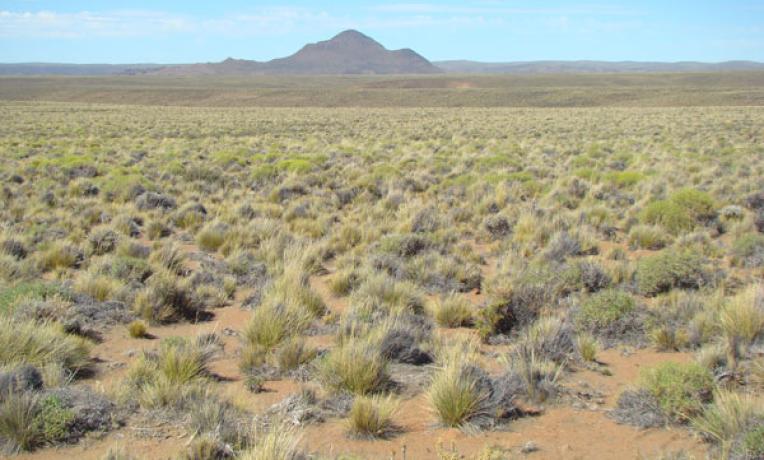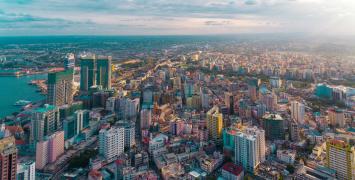Climate change could lead to dramatic shifts in dryland ecosystems
A study published in Science by ERC grantee Dr Fernando T. Maestre shows how increases in aridity such as those forecasted under climate change lead to abrupt shifts in dryland ecosystems worldwide, limiting their capacity to sustain life and provide essential ecosystem services to more than 2 billion people.

Drylands cover about 41% of the Earth's land surface and host one in three humans inhabiting our planet. In these areas, life is highly conditioned by aridity, the balance between rain and evaporation of water from soil, plants and other surfaces.
A study by Dr Maestre of the University of Alicante has revealed for the first time that as aridity increases, dryland ecosystems undergo a series of abrupt changes. These changes happen in a non-linear fashion, and drastic shifts in essential ecosystem attributes occur. When certain aridity values are reached, the soil loses its fertility and eventually the entire ecosystem collapses, with dire consequences for local populations who directly depend on agriculture, cattle herding and wood harvesting for their livelihood.
Watching this video you are accepting Youtube cookies policy
More than 20% of global lands affected by 2100
‘One may expect that as aridity increases dryland ecosystems will gradually become less green and fertile, heading towards a more desert-like landscape,’ says Dr. Maestre. ‘However, there is another more concerning scenario, which is that these changes may not occur gradually, but drastically when certainly aridity levels or thresholds are crossed’.
According to climate forecasts, more than 20% of the emerged lands of the planet may cross one or several of the thresholds identified in this study by 2100 due to climate change. ‘Life will not disappear from drylands with forecasted aridity increases, but our findings suggest that their ecosystems may experience abrupt changes that will reduce their capacity to provide ecosystem services to more than 2 billion people, such as soil fertility and biomass production,' says Dr Miguel Berdugo, a postdoctoral researcher working at Dr Maestre´s lab and the lead author of the study.
Three phases in the cycle of change
The study identified three phases of accelerated ecosystem change in response to increases in aridity. First, when aridity levels cross values of around 0.5, ‘the ecosystem becomes limited by the lack of water. The vegetation changes and it becomes dominated by species adapted to more arid conditions and to drought, such as grasses and shrubs’, says Dr Maestre.
After these initial vegetation changes, when aridity values exceed 0.7, the soil becomes much less fertile. It loses its structure and becomes more vulnerable to erosion. Moreover, soil organisms that play essential roles in maintaining ecosystem functioning are radically affected, with large increases in the presence of pathogens at the expense of more beneficial organisms.
Finally, beyond aridity values of 0.8, an abrupt loss of diversity and plant cover take place. ‘The system collapses and becomes a desert. Plants cannot thrive in these conditions and can only survive taking profit of the ephemeral windows of opportunity that occur whenever it rains’, says Dr Maestre.
Minimising negative consequences
The findings of this study are of great relevance for understanding the impacts of climate change on dryland ecosystems. They could help establish appropriate mitigation actions in response to forecasted increases in aridity in drylands across the globe.
‘While we will not stop climate change, I believe we still can minimize its negative consequences on dryland ecosystems, which are essential to sustainable development’, says Dr Maestre. ‘By providing information on how multiple vegetation and soil properties change as aridity increases, and by mapping those areas most sensible to such increases, our results can be used to optimise monitoring and restoration efforts in drylands worldwide, to preserve their unique biodiversity and to hopefully avoid its desertification.
The ERC made it possible
The ERC has supported Dr Maestre’s research lab since 2010, making this study possible. ‘It allowed us to think big and pursue our vision,’ he says. ‘We could study dryland ecosystems across continents in a manner never done before, giving us a global view of their current status and the challenges they face in an era of accelerated environmental change.’
This is the second article in Science that comes out of the BIODESERT project. In the first paper, an international group of scientists, together with Dr Maestre, pieced together a global atlas of soil bacteria. The findings could open new paths to improve soil fertility and increase agricultural production.
‘ERC funding allowed us to think big and pursue our vision.’
Bio
Dr Maestre leads the Dryland Ecology and Global Change Lab at the University of Alicante (Spain), devoted to understanding how dryland ecosystems work and how they are responding to ongoing global environmental change. He has won two ERC grants so far: a Starting Grant for his BIOCOM project in 2010, and a Consolidator Grant for the BIODESERT project in 2016. He has been on the international list of Highly Cited Researchers since 2018, which recognizes those researchers that have published multiple highly-cited papers that rank in the top 1% by citations.






